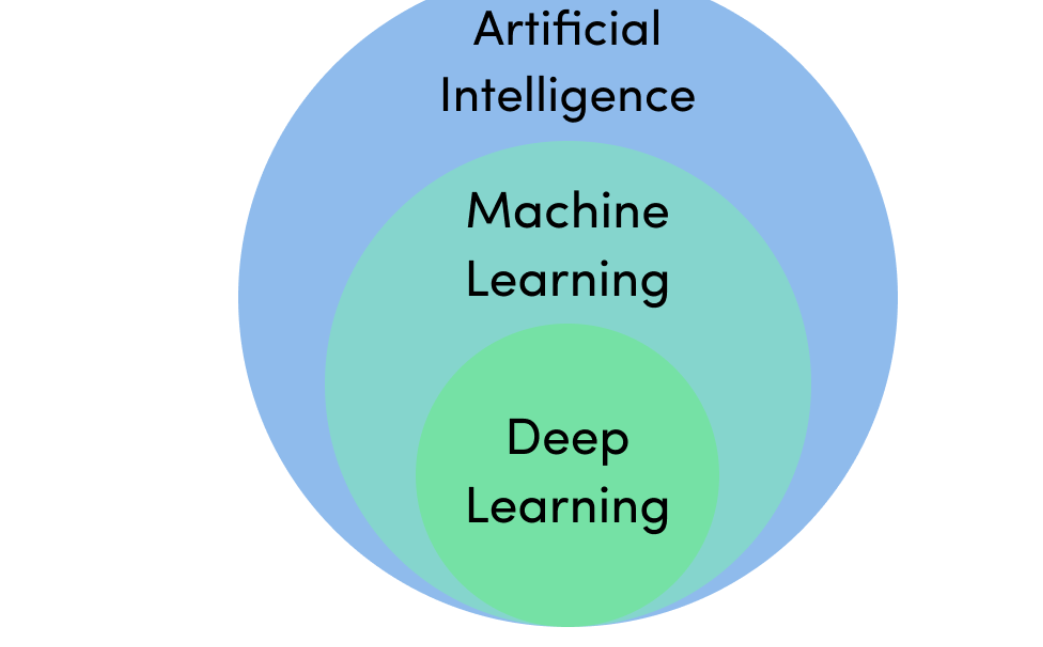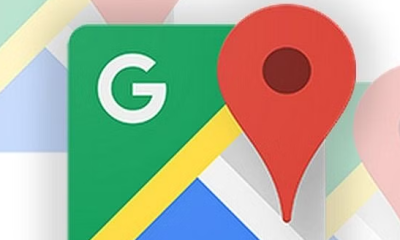Guide
What is Deep Learning and How Does It Works?

The next revolution in computing will be led by Artificial Intelligence (AI) and machine learning (ML), which will be the pillars of this revolution. The success of these systems relies on the user’s capacity to identify patterns and, using information gleaned from the past, to forecast the course of future events. This explains why Amazon makes recommendations as you buy on their website, as well as how Netflix can predict your preference for awful movies from the 1980s. In spite of the fact that computers that use AI concepts are sometimes referred to as “smart,” the vast majority of these systems do not learn on their own; rather, they need the assistance of human programmers. The inputs for predictive analytics are prepared by data scientists, who choose the variables to be utilised in the analysis. On the other hand, deep learning has the ability to automatically do this task.
What is Deep Learning?
One branch of machine learning that can be broken down further is called deep learning. This is a discipline that is predicated on self-education and continuous growth via the study of various computer algorithms. Deep learning makes use of artificial neural networks, which are supposed to emulate the way people think and learn, in contrast to machine learning, which makes use of more straightforward principles. Up until quite recently, the level of complexity of neural networks was limited by the amount of processing power available. However, recent developments in Big Data analytics have made it possible to build more complicated neural networks on computers. These networks enable computers to watch, learn, and respond to difficult situations more quickly than people can. Image classification, language translation, and voice recognition are among areas that have benefited from deep learning. Any issue involving pattern recognition may be solved with its help, and the solution does not need human interaction.
The process of deep learning is driven by artificial neural networks that consist of several layers. Deep Neural Networks, also known as DNNs, are a sort of network that can make meaning of pictures, sounds, and text by using complicated operations that may be performed by each layer. These complex operations include representation and abstraction. Deep learning is often regarded as the area of machine learning that is seeing the most rapid expansion. It is an example of a really disruptive digital technology, and an increasing number of businesses are putting it to use in the process of developing new business models.
Now that you have an understanding of what Deep Learning is, let’s move on to gaining an understanding of how Deep Learning really works.
How Does Deep Learning Work?
Layers of nodes make form neural networks, which may be compared to the neurons that make up the human brain. The nodes that make up each individual layer are linked to the nodes that make up the layers that surround them. The greater the number of layers that make up the network, the deeper it is said to be. In the human brain, a single neuron may be the recipient of hundreds of impulses from other neurons. Signals are sent from node to node in an artificial neural network in order to assign weights according to those signals. A node with a greater amount of weight will have a greater influence on the nodes in the layer below it. The last layer is responsible for producing an output by compiling the weighted inputs. Hardware with a lot of processing power is necessary for deep learning systems since these systems handle a big quantity of data and include a number of sophisticated mathematical computations. Training a neural network, on the other hand, might take many weeks even when using such sophisticated technology.
For deep learning systems to provide reliable results, they need vast volumes of training data; as a consequence, the information they receive comes in the form of very massive data sets. During the processing of the data, artificial neural networks are able to categorise the data based on the responses they get to a series of binary questions that involve very sophisticated mathematical computations. These questions may be either true or false. For instance, a software that recognises faces works by first learning to identify and recognise the edges and lines of faces, then moving on to recognise the most important elements of faces, and eventually moving on to recognise the overall representations of faces. As time goes on, the software will train itself, which will enhance the likelihood that it will provide right answers. In this scenario, the facial recognition computer will eventually become capable of reliably identifying faces.
Example of Deep Learning at Work
Suppose the aim is for a neural network to detect images that include dogs. Consider a Rottweiler and a Poodle as two examples of dogs who don’t appear identical. Furthermore, photographs depict dogs in a variety of positions and lighting conditions. For this reason, a library of photos must be established, including images of dogs and items that aren’t dogs annotated with the phrase “not dog.” Using a neural network, pictures are transformed into data. In the network, different nodes give weights to various elements. Furry, snouty, four-legged, etc. are all combined in the final output layer to produce the output “dog.”
A comparison will be made between the neural network’s response and the human-generated label now. The output is verified if there is a match. Any errors are noted and weightings are adjusted if the neural network detects them. The neural network adjusts its weights again and over again in an effort to increase its ability to recognise dogs. Even though the neural networks aren’t explicitly informed what “makes” a dog, this kind of training is known as supervised learning. They must be able to spot patterns in data over time and then learn on their own.
Let’s take a look back at the history of Deep Learning once we’ve learned what it is and how it works.
Rise of Deep Learning
An artificially intelligent “learning machine” proposed by British mathematician Alan Turing in the 1950s is credited with kicking off the field of artificial intelligence. Arthur Samuel created the first computer-based learning system. The longer an IBM computer played, the better it became at checkers thanks to his software. In the following decades, a variety of machine learning methods emerged and faded in popularity.
Since of the “local minima” issue, neural networks were often overlooked by machine learning researchers because they seemed to generate the fewest mistakes. Computer vision and facial recognition, on the other hand, have advanced. Real-time face detection was made possible in 2001 with the invention of Adaboost, a machine learning method. Among the decision sets it used were questions like, “Does the image have a bright spot between dark patches, possibly denoting a nose bridge?” The likelihood of picking the correct picture from an image increased as the data travelled farther down the decision tree.
For many more years, neural networks remained out of favour until powerful graphics processing units eventually came to market. As a result of the advancements in computer technology, researchers are now able to run, alter, and analyse pictures on desktop computers rather than supercomputers. ImageNet, a library of millions of tagged photos from the Internet, was the catalyst for the most major advancement in neural networks. As a result of crowdsourcing, networks now have access to an almost infinite supply of training materials. Deep learning libraries have been released open source by technology businesses during the last several years. Open-source Torch modules from Facebook, Amazon DSSTNE, Google Tensorflow, and Microsoft CNTK are some examples.
Deep Learning in Action
How does deep learning affect people’s life, outside the music streaming service recommending songs you may like? There is a wide range of applications where deep learning is being used. When you submit new images to Facebook, the social network automatically recognises and tags your friends. Deep learning is used by digital assistants like Siri, Cortana, Alexa, and Google Now to analyse natural language and recognise voice. In real-time, Skype transforms spoken words into text. Spam messages may now be detected before they reach the inbox on many email services. Deep learning has been deployed by PayPal to guard against fraudulent transactions. Apps like CamFind enable users to snap a photo of any item and, using mobile visual search technology, learn the object’s identity. ‘
Among Google’s solutions are those based on deep learning. The AlphaGo computer programme developed by Google Deepmind just beat the world’s best Go players. WaveNet, developed by DeepMind, is able to produce speech that sounds more like a human voice than any other speech system now available. Deep learning and image recognition are being used by Google Translate to translate spoken and written language. You can see exactly where a picture was taken thanks to Google Planet. Tensorflow, a database for deep learning software, was created by Google to aid in the development of AI applications.
For decades to come, civilization will be transformed by deep learning. Worldwide, self-driving cars are being tested, and the complex layer of neural networks is being trained to recognise traffic lights, determine objects to avoid, and adjust speed. Everything from stock market movements to the weather can now be predicted with the help of neural networks. When a digital assistant can tell you when to sell stocks or when to flee from a cyclone, that’s a huge benefit! When deep learning programmes are able to construct treatment regimens for medical patients based on evidence and identify tumours early, they might even save lives.
Now that you have a firm grasp of what Deep Learning is and want to take the next step in your career in this cutting-edge field, you should be aware of the potential career paths available.
Deep Learning Career Prospects
There is a severe lack of personnel in the area of artificial intelligence. Even while not all corporations are now recruiting specialists with deep learning abilities, they are projected to become a need for enterprises that want to stay competitive and drive innovation in the near future. Since data scientists and software developers don’t have the specific abilities required for machine learning, machine learning engineers are in great demand. Engineers in the field of machine learning have emerged to fill the need. Is deep learning good for your career or your salary? There’s a lot. The average compensation for a machine learning engineer is listed on Glassdoor as little over $115,000 per year. There is a pay range of $100,000 to $166,000, according to PayScale data. It is expected that deep learning systems will continue to develop and extend across all sectors in the next several years.
Learn More About Deep Learning
To be a part of this revolutionary technology, there has never been a more exciting moment. Simplilearn’s tutorials and training programmes should be considered if you want to get into the AI and deep learning industries. If you’re interested in pursuing a career in deep learning, understanding Tensorflow’s code is a reasonable next step. The next wave of computer innovation will be propelled by a well-educated workforce with the appropriate qualifications.
Video Guide
FAQ’s
What is meant by deep learning?
As the name suggests, this kind of AI mimics the way humans acquire certain types of information. Data science, which encompasses statistics and predictive modelling, relies heavily on deep learning.
What is deep learning explain with example?
In deep learning, numerous layers are used to gradually extract higher-level characteristics from raw input. Higher-level concepts, such as numerals or characters or faces, may be identified via image processing techniques that use lower levels to detect edges.
Why it is called deep learning?
The amount of extra “Layers” used to learn from the data is what gives Deep Learning its name. A deep learning model, if you don’t already know it, is only updating the weights using an optimization function while it is learning. An intermediate row of “Neurons” is referred to as a Layer. In June of 2021,
















